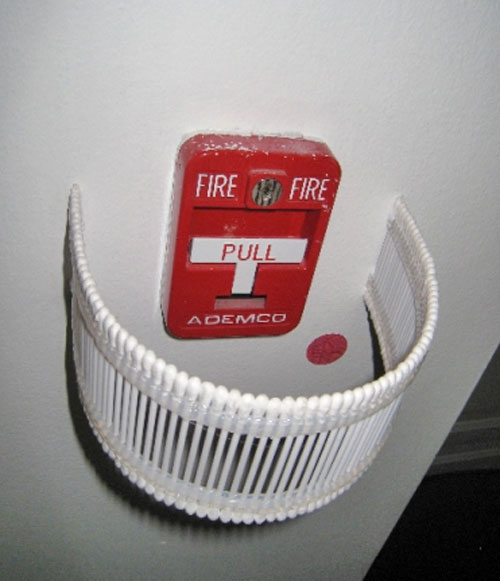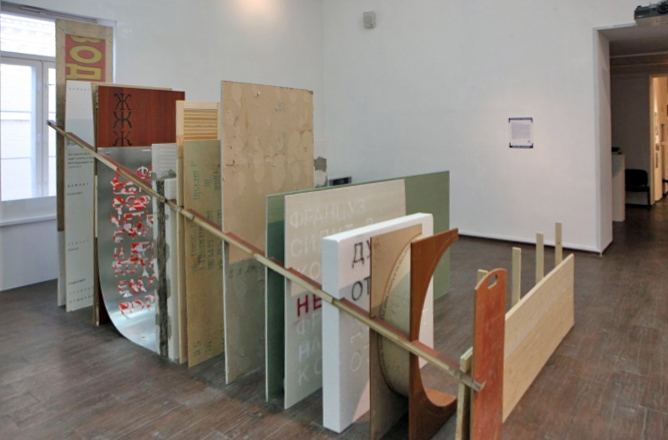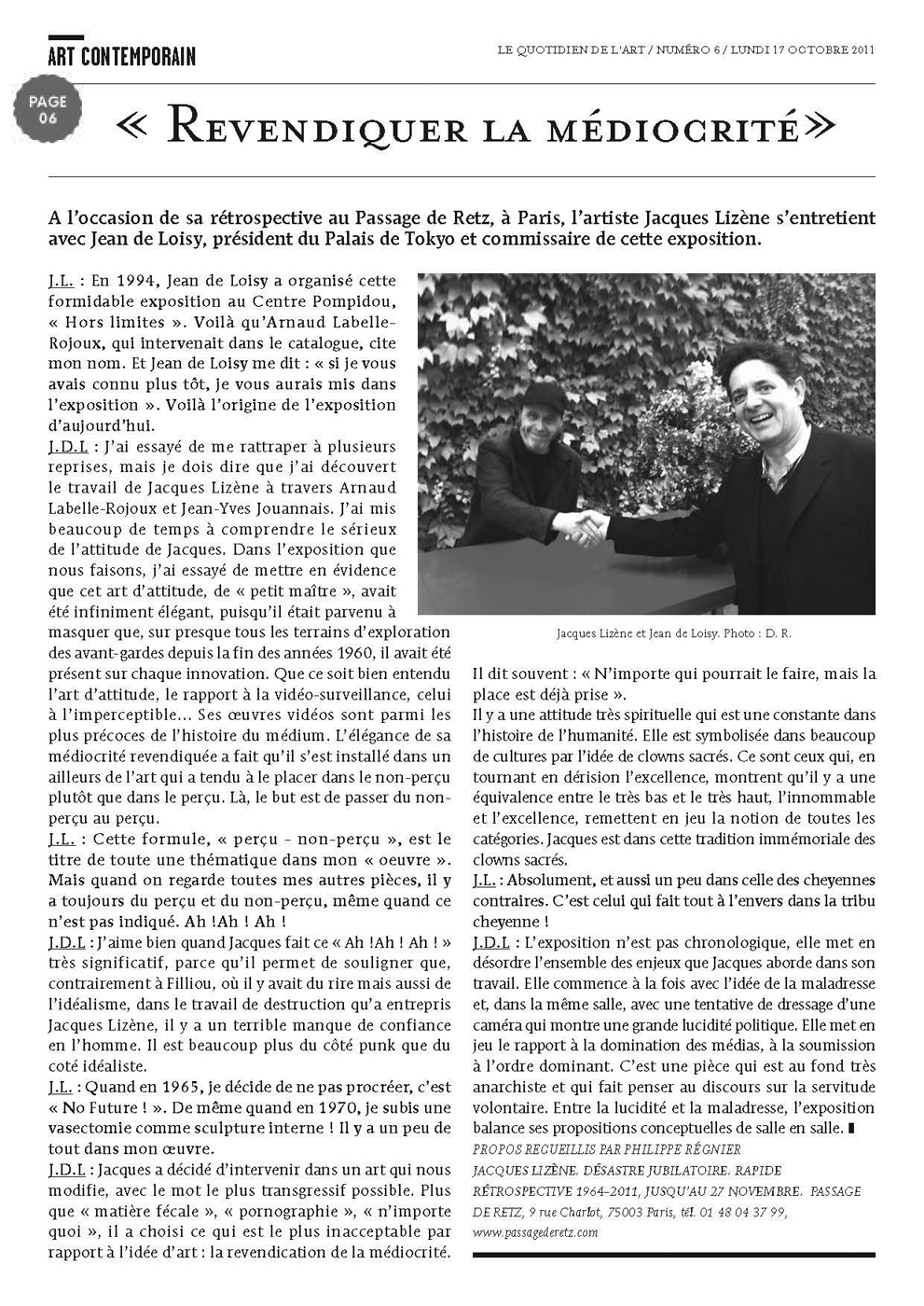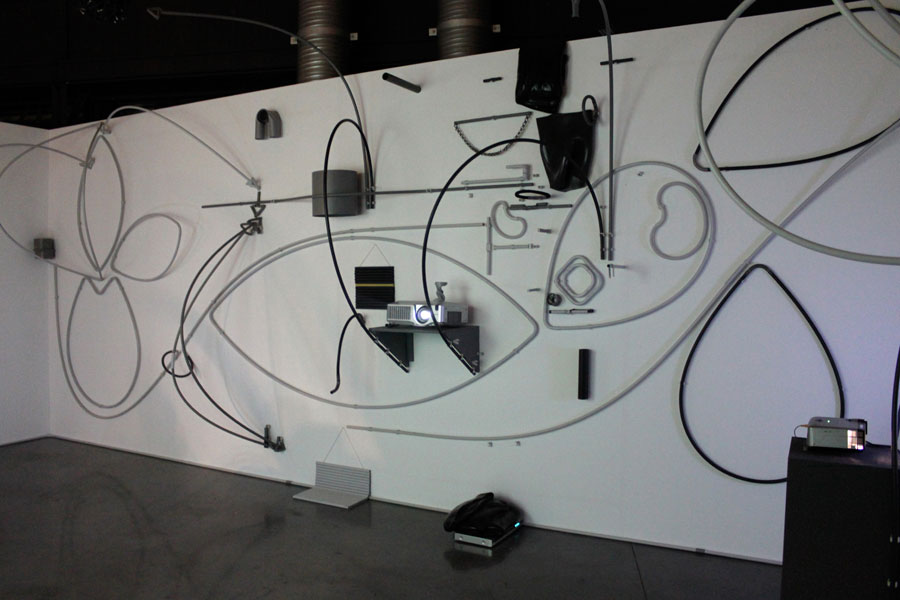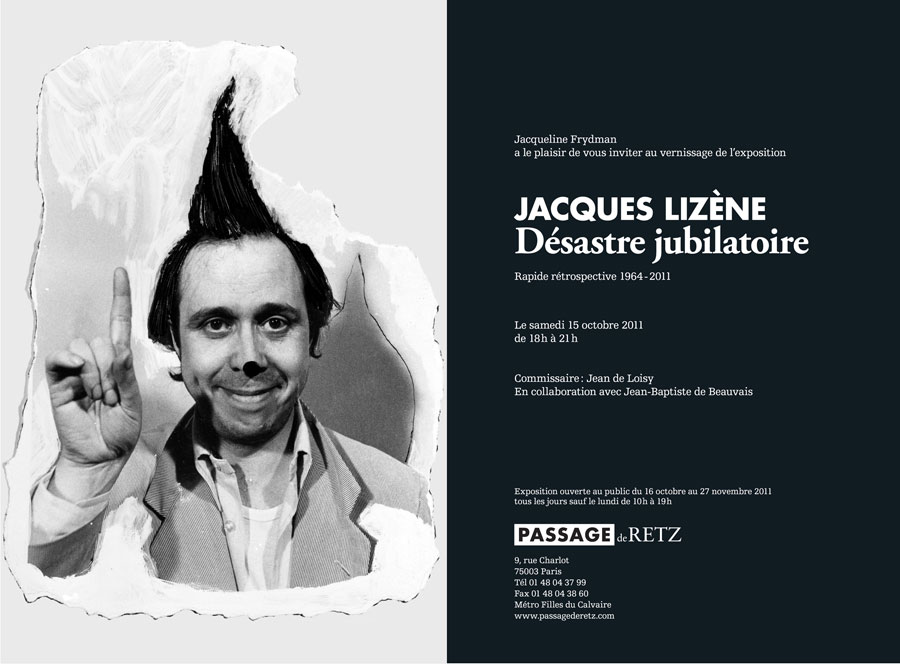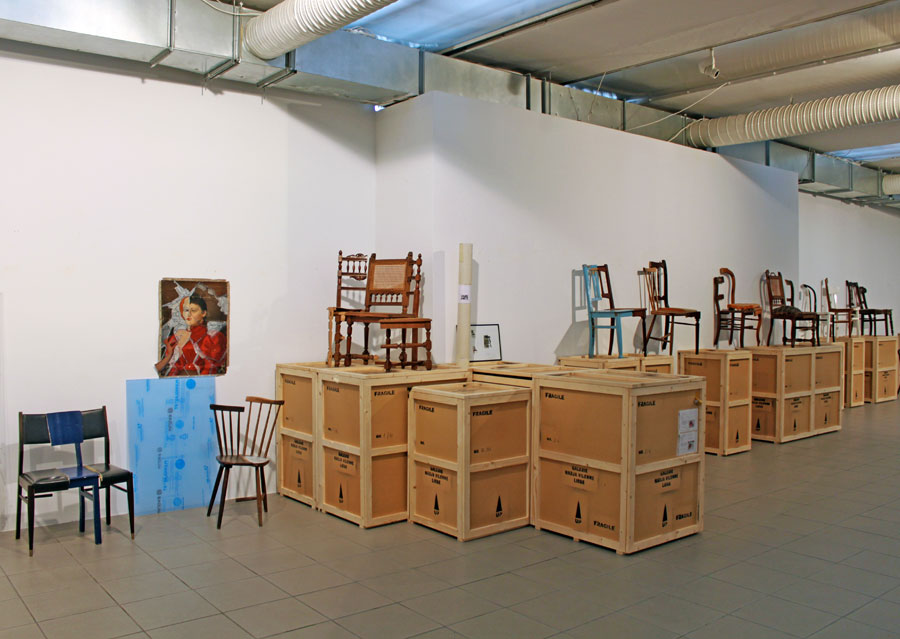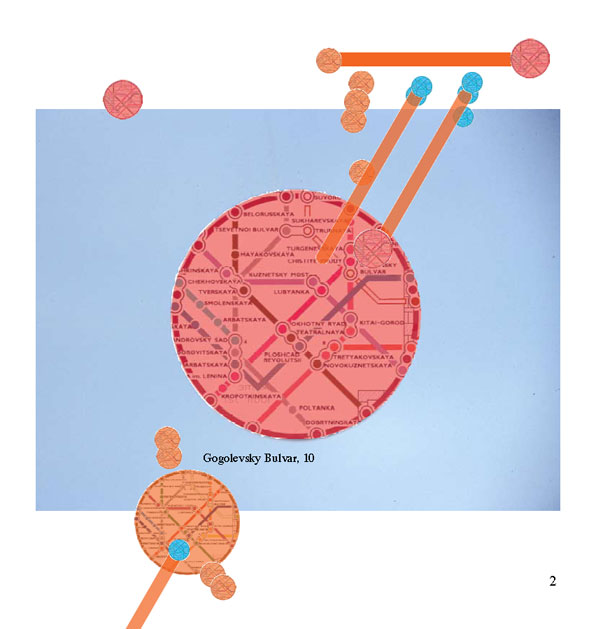
11 Flemish Icons
(Stop-spots of Enlightenment)
An ephemeral traject of 11 elementary sculptures is spread out/over/through the museum as a levitated echo of something basic and functional as a metroline, to make the city working well. But on this metro of the mind travels an imaginative lightness which places itself completely next to the practical question of life. Though from there, as lifted in the sky of a world without gravity, this light of poetry, made from ‘non-serious’ substance, gives breath to the over-objectivated environment.
These ‘icons’ are radically unhistorical and unpolitical, they are short pure moments of rest during the daily move. Even in the lost time of waiting for the train the mind can create the touch of meditation. The cheap sterile industrial white materials without any art patina are composed into simple noble contemporary shrines. Their unsaid religiosity and sacro-absurdity embrace the profane conditio humana with a complementary sphere of care and joy.
The risky courage of the choosen materials suggests also a forgotten value towards great history and eternity: the quality of your daily participation now must lift itself above the average value of cultural economy.
Honoré’s philosophy of ‘the open body of art’ gives space for artistic experiences from the subjective point of vue of the passant, the passenger, the visitor, the one who sees the ‘stops’. Icons are stop-spots, operating in the awareness as junctions do in a network, or stations in ‘your’ metro. The spread setting of the iconographic stations enlarge the field of spirit over a more extensive range, mapping the human move. You buy awareness with attention. By integrating a continuum of these stopspots in the reflection on (your) life, you’re turning your capital into fortune.
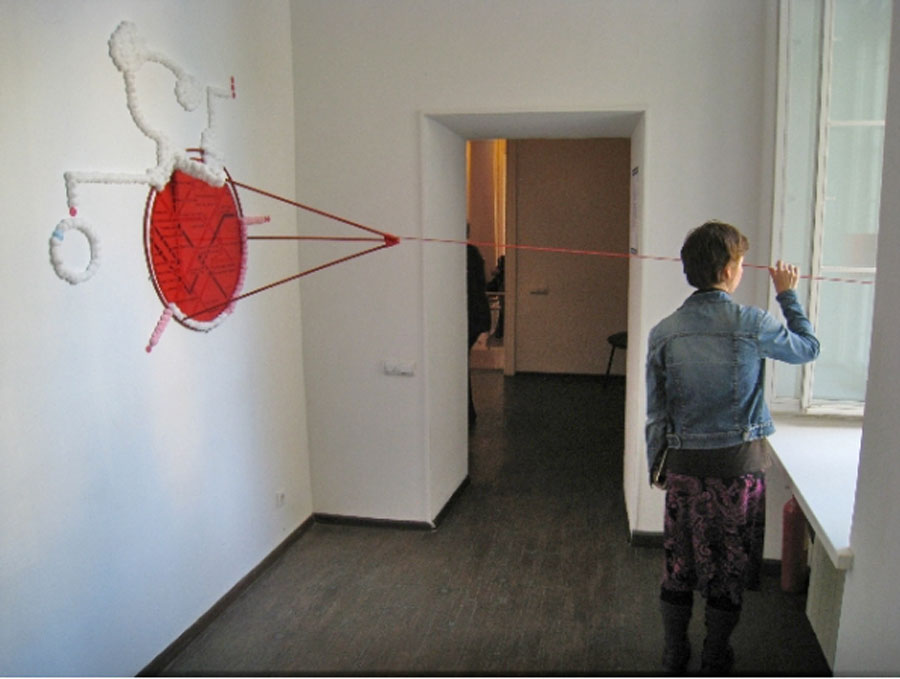
Levitative inter-view by Inge Braeckman with Honoré d’O on the work-titled eraflew<welfare contribution to « The Impossible Community », Mmoma Moscou, sept 2011
Your first artistic act was the creation of your self as an artist, the creation of another self: in the 1980’s you gave birth to an alter ego, another ‘ego’. The name Honoré d’O is a heteronym, it is not the name that your parents gave to you. While nowadays everybody likes to talk about the person and the personal life of an artist, you hide your person, like for example the poet Fernando Pessoa did. You escape from your personal life to give shape to your artistic life. Is it a sort of escapism which penetrates also in your art, is it also part of your being?
A name to hide yourself is a pseudonym, it’s a fake name that covers your real identity. A heteronym is a real name of your being, presenting a hidden personality of your person. Pessoa used many heteronyms to give a multipersonal expression to the many incompatible ways of thinking which may live together in one person. I became Honoré d’O because I didn’t want to fulfill a profession in the society nor in the booming system that ranges as a non-stoppable train towards the terminus. By the name-giving act I could leave the officially designed person, and bring into light the inner person. To be an artist was not an initial intention. Later the word ‘artist’ seemed the only suitable name for the social position ‘hors competition’. In the professionalized society of today it’s clearer than ever before: you must be on the train, accepting the terminus.
Your second act as ‘an artist’ was to work for six years, and during that period to show none of your works because you did not want to participate immediately, because you believe in a kind of anonymity to distinguish art from the faceless mass.
To find an image of connected experience, of relational ethics and esthetics, was the primary goal. The exploitation of these results would have turned into a clash of interests. I wanted to keep the investigation as far as possible in the philosophical meditative intimate mediation, my absence in public life was copiously feeding the joy of the labor. In fact ‘To earn your life’ was taken as an insult. To be born in the ‘law of the gratuitous’ causes a short circuit with the trading law of actuality. My steps are running the traject of the quest, reflecting about solidarity between birth and existence, humour and dialectic, not with the taskto make money. Participating in the functional sense was never in my mind.
That is why you often use ‘light’, delicate and fragile materials, which are associated with air, or you compose works with sweet and toys, with sterile, empty, industrial, cheap elements, which are associated with consumption and concrete vulnerability. Your materials do not only want to emphasize Kundera’s ‘the unbearable lightness of being’, they also want to show that the creation of links, of engagement and transitory context is more important than the result-object. In the opening pages of Peter Sloterdijks Sferen bubbles are compared with marbles disappearing into ‘space’. Some of your works consist of marbles. Is there any link with Sloterdijks philosophy in which he talks about the connection between the bubble and the bubble blower who excludes the rest of the world by making the bubble?
In the idea of the ‘open body of art’ the environment is sucked up in the piece. The inter-relational co-existence between piece, public life, artist, time, theme and space get involved in the supra-swinging field of changing processes. Frivolity had to appear in the engagement for higher knowledge. Degagement is a mentality with more irony and more decisiveness, in disgust with ‘decisions’, which are sojourning in a lower dimension. Honestly the art piece is mostly an obstacle for representing the critical and poetically light-hearted spirit of artistic life, what forces the radical awareness of the difference between cultural production (product based) and art (spirit based). The best way is to force myself to oblige you to do the effort in the logic of the pleasure and the need. Individual concentration articulates con-science rather than social landscape generalizes attention. All right, words mustn’t mix the alchemics immediately, to stay clear about a fresh approach to an art term that firstly fits to art before it fits to function, to application, to society, to history. But I already start to scrape the production patina off the image, the preparation even seeks to cut away the patina of history. Illustrative actuality or explicative ideas give ‘absent’. No fame, no names, no soviet, no china, no bioboom, no psycho or pharmacy, no jurisdiction, charity politics or wall-calendars. The airy artwork surpasses its aim to be a solution! It shrinks from materialistic inspiration and, in the end, gives us a thorough grip on the ever-elusive idea of total – therefore changing – value, of everlasting, endless, creative capital.
Once you told me that you believe in creation, in the nature and the soul of art, but not in the camera, not in the press.
Now, after reading e.g. Peter Sloterdijk I can say: the aeropieces are space building co-fragile and co-isolated entities with an inner auto-legitimate connectivity that touches the world through the transparent borders of their immune system. Overwhelmed by the atmosphere, one leg standing in a topographical axioma, the intellect takes the air as the handle and spins out marks to consult extreme examples of open-bodied intimacy. The earlier marble-circuits were running back and forward, animating the space with opposite and contradictorial points of view. Today I can openly say that I believe in camera and press, not in poetry.
Excuse me! You don’t believe in poetry anymore?
Lies and earthquakes are recognized as a part of the hybrid fundament of the truth. Strategies blow a stiff breeze over the daily spontaneous beauty of visual language. The global drive hunts profit. Tactics for economical effect establish global poetry, they menace the naive and idealistic idea of subject based poetry. But due to a self-reflective character, unwilling to understand why human’s world wants to be so explicit, the introvert option became the standard. By plying the surroundings into the piece, the inversed installation pushes the extravert dominancy beneath the new floating equilibrium in in-situ-, in contact-working, in responsibility respons.
Is it possible to postpone your so called ‘wind philosophy’ and to press the point of your project in terms of your interest in ‘visual’ air? What about the constructions? In the economy, aswell in the art world, the object still dominates. When people spend their money, they want to posses something, they want a return that remains ‘for ages’. You avoid the product making, the economy of art and its publicity. So your work seems to consist of antimatter. Of just breathing? How far does the role of emptiness play its not fulfilling game? I guess tangible absence as a concrete feeling will be withheld.
Thank you, an aerodynamic wish, let’s spread the sun over our common intacts. Once you left the compétition and the obstacle rush of the product, it is one step, one second to art, one breath…
Logic sees no successful change of global vision without broadcasted media and techno-global power.There is leisure time in the new world. But the need for a complete human humiliation is pertinent. Excellent emptiness doesn’t appear unless you open up the packet. The explosion provides new, virgin and free territory.
Concrete?
A few onsets and their sedimentary disposits! Airy traces can be interpreted as starting points where the project began its ballistic traject, or as initial sketches for sphères where fragile elements in levitated interdependence try to cohabit, shaping light and air for upcoming settlements of baby communities, which are reflected by poetry, imagining delighted pleasure gardens beyond the techno-structural evidences, far away from the terror of the success and the programme of the show. Happy artistic praxis of meditation is indeed detecting life flux besides the market. The breath of the day, res extra commercium, treats the universal competitive essence of consumption with contempt. The belief in artistic humanity is far beyond the escape proposal via cultural commitment.
How impossible is the community in your work? Your known positive vision/look on life, catastrophes included, appears to be confronted with an inaccessible destination. How do you look at the idea of a failure?
I feed the assumption that all elements are ready and in full disposition to act our motives. Moreover, destination seems to move itself in our direction. The postponement of ‘the impossible community from june to september 2011was a brilliant start, the apparition of a substantial vide is an occurence of pure metaphysical opportunity. The sense of life came nearby and nearly truth. My project is to celebrate the postponement, to avoid decisions in this vacant being, to honor the incidental deus ex machina. The latin pro-iacere means to throw forward. The project consists of accepting fortune and of maintaining the permanent will of continuation to throw the project as far as possible.Fate offered us a new type of time, a displaced ‘now’, we must wait to use it, to fill it, to overload it with significantissimae, we must avoid to produce the aged and tired humanity, flowing with inventiveness, milk, ingenuity and honey, satisfactive successes, dished up by history, distinguishing not enough what is the personal story and what is the common story. We fertilize the time with the emptiness of the solution and with an untouched potential of approximity. We fertilize reflection on lost life to serve us with vision on a restarted life in a far future.
In the Mmoma you show plexi boxes and globes, representing an intimate and internal world. In contrast with the marble, they show the inside and they contain something, let’s say that they are metaphors for your whole world as an artist. The greek philosopher Aristoteles says that all movements take place, free from the viewer, in a finite perfect globe (or sphere), that personifies the world. Do you agree with that?
Aristoteles’ society lived in the old protective globe, the one and unique universal bulb where people and gods were unified in certitude. Now we live in just one tiny bubble of expansive foam, surviving in co-isolation and co-fragility with foam neighbors who organize their own religious praxis and entertaining destiny of indulgence. The standby modus of danger and failure is denied. I’m planning to blow this pseudo-theoretical wind philosophy through the museum in tiny placebo air particles, composed together in spheric condensations of spiritual ambiance and ambition, focusing on the in-depth profundity of inner mythology and enlightened co-mentality……….. (let’s say to customize the earlier holiness in visionary environment.)
Not at all for testing the institutional tolerance or tickling the PR of the project, I’m continuing to drag confusion along the road, dressed up with musicality in the psychoperipathetic meta-walk-talk rhythm. The Impossible Community touches me in the dead center. The personal discomfort to cope with the world was my departure point of origin, where I decided to refuse being a civilian part of the problem and to inhabit an interiorized vicinity. I proposed myself and the curator the preposition of the impossible individual, a blind person who experiences a postponed fun in a left society. Let me imagine 6 indoor and 2 outdoor transparent spread braille points. The joy to share weightless symbols, in the language of coral, in the logics of pre- and post-historical proto-evidences,…
why not gathering around a first fire-making scene, attended by a free standing horse flower from Aristoteles’ orchard. The more or less eloquent Latin name: ‘taraxacum officinalis sativum’ is easily planted and subsequently cultivated in a dictionary. That’s why. A stroll plus roundabout in the deviation. The Greek cemetery will be faded under more layers of cultural wasteland. And than. The eyes. Look at them.The eyes, as eternal initiators of the fittest adaptation, longing to travel via the vehicle of free perception, will ostentatiously turn their back to the description. Eyes are called to fly from culture to culture, more particular from era to era, and they uttered the wish to accompany us in our hurry to deliver the translation ‘asap’ in the hot spot Mmoma Moscou. Pasaeromeraflew<asap more welfare. Worktitletime. These clear and cryptic ingredients found the installation.
